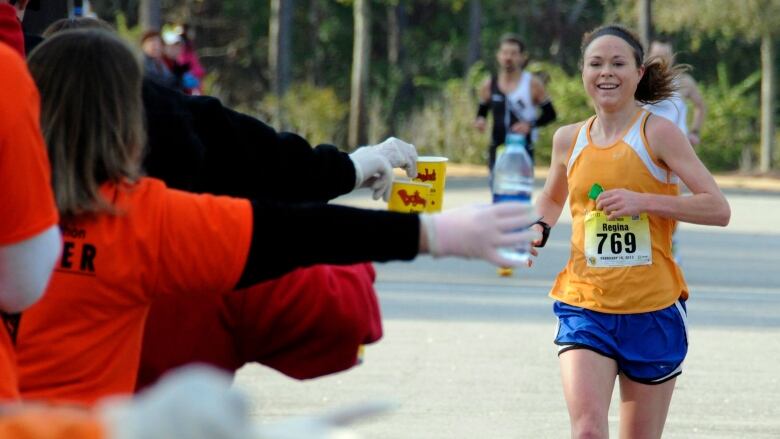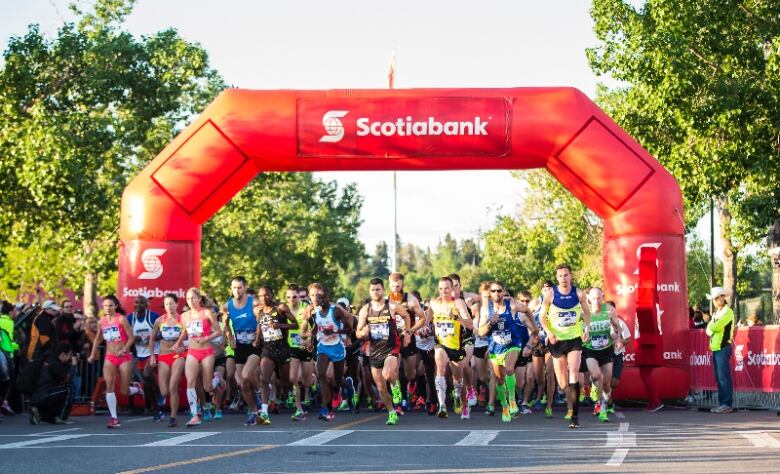Running program aims to help smokers butt out for good
Program to start at 21 Canadian cities; 50 cities in 2017

Seasoned smokersare well aware of that ubiquitous nicotine buzz: take a drag, exhaleandfeel the addictive drug ease your nerves as it delivers a fleeting sense of relief.
Now, based on new research, the Canadian Cancer Society wants to instill a more permanent and sustaining feeling in smokers that just might give them the leg up they need to kick the habit.
It comes via running. Call it the runner's high.
Initial research
The research has prompted theCanadian Cancer Society to team up with fitness retailer The Running Room to launch the new pilot program, dubbed Run to Quit.
The whole idea started at a marathon whenJohn Atkinson, the director for the cancer society's tobacco control and cancer prevention, started chatting with Running Room founder John Stanton.
"Wechatted about how in some ways, the cancer society and the running room were both trying to do to do the same thing," he said. "In2013, we ran a pilot of the program. Tenweeks in person and online for people who want to quit and learn how to run at the same time."

The initial results were promising. Atkinson said that people enrolled in a Running Room clinic showed a 29 per cent smoking quit rate. The rate for people quitting cold turkey was just four per cent, he said.
"We thought we had somethingcombining exercise and quitting smoking."
Their findings were backed up by similarresearch out of the University of British Columbia, which found thatrunning would lesson withdrawal symptoms and decrease othersymptoms, like jitters.
There's alsoAtkinson's own experience with quitting. He tried to quit nine times.
"I was a two-and-a-half-pack smoker. When I quit, I was250-plus pounds."
He said he started running very gradually,with the help of supportive and active coworkers.
"I started walking, and gradually I introduced some jogging and I started running. And I kind of never looked back."
He's been smoke-free for 16 years.
"I found the running just made me feel good. It made me feel good about myself."
Expanded national program

The initial resultsfrom their pilot project promptedAtkinson andStanton to expand the program nationally.
"This year we're doing it in 21 locations, nation-wide," he said, noting that in 2017, the program will be expanded to 50 locations, and then 110 locations the year after, in 2018.
The program itself is a10-week smoking cessation program. Participants receive practical support on quitting smoking while also building up their fitness to do a 5-kilometrerun or walk.
People enroll in a clinic through the Running Room stores across Canada, or online for those not close to a store.
The clinicbeginsin the spring, andinvolves meeting up weekly for a training and running session, along with personal training and tips of staying off smokes.
Atkinson noted it's anything but a boot camp, describing it asavery gentle exercise program.
As for further evidence he was able to muster, Atkinson said he and Stantondid a pilot project in Ottawa. After six months,close to 30 per cent of participants were still off the cancer sticks.












_(720p).jpg)


 OFFICIAL HD MUSIC VIDEO.jpg)
.jpg)



























































































